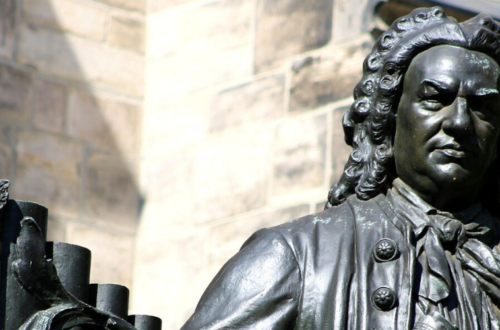-
Being Raucous with Royer, or Baroque Music for Kids at Home

I can’t help myself. Whenever I read an article about how calm and soothing classical music is, I think of pieces like Vertigo by Joseph-Nicolas-Pancrace Royer (c1705–1755), which is anything but. If you want to share some exciting Baroque music with your kids while you’re stuck at home, check out this piece by Royer!
Vertigo is the kind of crazy cool music that was happening in France between the 1730s and 1750s, at the end of the Baroque period (roughly 1600–1750). It is fire, it is fury. These are emotions that kids should be exposed to in music, too.
This music is anything but relaxing, but that’s what makes it so great. I think its intensity is part of what draws my one-year-old son, Little M, to it. Hopefully your children will be drawn to it, as well, and will find it as interesting as Little M does.
Before we get to the music, here’s a short bio about Royer to get you up to speed.

Royer’s Bio
Joseph-Nicolas-Pancrace Royer (c1705–1755) was a French composer during the late Baroque period of classical music. In addition to being a composer, he also played the harpsichord and organ and was known for being a great musician. He worked at various musical locations in Paris, as well as at the French court at Versailles.
Royer is best remembered (when he’s remembered at all) for his harpsichord music. But he actually wrote a lot of operas, which are like plays but with singing instead of speaking. He was a very well-known musician during his lifetime even though he has mostly been forgotten today.

The Music
As promised, the selection my son, Little M, and I wish to share with you today is Royer’s Vertigo. This music is great to share with your kids at home because it is not only interesting to listen to but also fascinating to watch. My son is very intrigued by the harpsichord and its unique sound, so he finds pieces like this fascinating.
While we’re on the topic, a few notes about the harpsichord, which is the only instrument in today’s video. Despite its appearance, the harpsichord is not very much like the piano. The technique used to play it and make it sound its best is completely different from piano technique. The unique sound of the harpsichord is created by little pieces of bird quill–like the part of a bird feather people used to write with!–plucked the strings when the keys are played.
If you want to learn more about the harpsichord and how it’s different from the modern piano, check out our Guide to Baroque Instruments.
This music was intended to shock and amaze and I think it does that as much for the player as it does for the audience. It’s full of devilish surprises that challenge the harpsichordist’s technique and the listener’s ear. It is virtuosic harpsichord music.
The fabulous harpsichordist in this video is Jean Rondeau. Go check out his website or his YouTube channel! A bunch more videos of his playing can be found on the Warner Classics YouTube channel.
If you want to check out the whole CD, you can find it on Amazon by clicking the image below. (Disclaimer: We may receive compensation [at no extra cost to you!] when you click on the links to this CD.)




